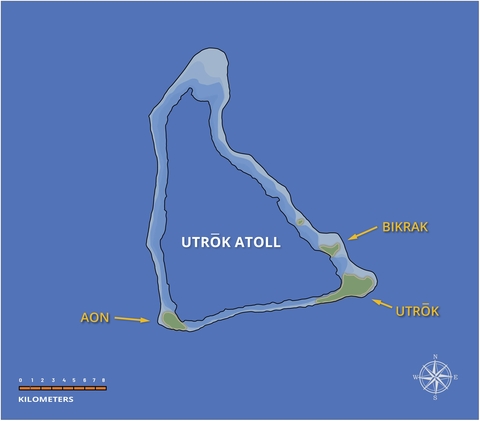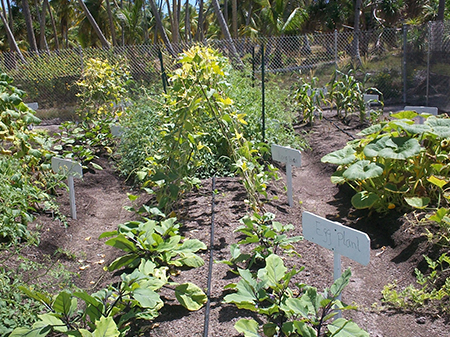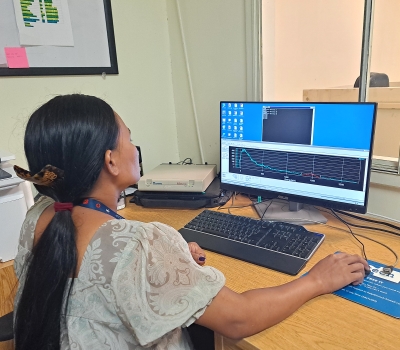Utrōk Atoll

FALLOUT ON UTRŌK
Utrōk Atoll is in the central north Pacific Ocean at about 11°15′14” N 169°48′ E. It forms part of the Ratak chain of atolls in the Republic of the Marshall Islands. This small, isolated atoll has three main islets with a combined land area of appropriately 2.4 square kilometers. The triangular reef structure of the atoll surrounds a shallow water lagoon of 58 square kilometers. It is the most populated northernmost atoll in the Marshall Islands with about 300 to 400 permanent residents.
Located about 500 kilometers to the east of Bikini Atoll, Utrōk Atoll experienced significant radioactive fallout deposition from atmospheric nuclear weapons tests conducted in the northern Marshall Islands during the 1950s. The most significant contaminating event on Utrōk Atoll was the CASTLE Bravo test conducted at Bikini Atoll on 1 March 1954. The 167 residents (including 8 in utero) living on Utrōk Atoll at the time of the blast received significant external and internal exposures to “fresh” fallout contamination before being evacuated to Kwajalein Atoll on 3 March 1954 for medical treatment and to avert further exposure. The Utrōk community returned to their home atoll about 3 months later but continue to seek assurances from the U.S. government that the atoll is safe for habitation.
The U.S. Department of Energy (DOE) originally assigned responsibility for the internal dosimetry program on Utrōk Atoll to the Brookhaven National Laboratory. Through until the late 1990s scientists from Brookhaven conducted periodic whole-body counting missions to Utrōk using ship-based assets to assess on-land individual internal exposures to cesium-137 and other high-energy gamma-emitting radionuclides.
More recently, the DOE developed a series of initiatives to address long-term radiological needs in the Marshall Islands to include more regular monitoring of island population groups. Under a working agreement between the Utrōk Atoll Local Government, the Republic of the Marshall Islands and the DOE, a whole-body counting facility was established on Majuro Island in May 2003. Majuro is the capital city of the Marshall Islands and the central hub of the local airline. At that time, Utrōk had no supporting island infrastructure that would allow for continuous operation of a whole-body counting system on their home atoll.
Under supervision from scientists from the Lawrence Livermore National Laboratory, the Utrōk Whole-Body Counting Facility on Majuro is maintained and operated by Marshallese technicians. Residents from Utrōk Atoll are actively recruited on scheduled outings to Majuro, especially during the summer months. With the cooperation of the Utrōk Atoll Local Government, the whole-body counting facility on Majuro also serves the general public and other visitors to the island.
EXPOSURE DATA ON UTRŌK ATOLL

Today, exposure to residual fallout contamination on Utrōk Atoll represents only a small fraction of the dose that people receive from natural sources of background radiation in the Marshall Islands. Exposure to residual fallout contamination on Utrōk is dominated by the external exposure and ingestion of cesium-137 (and to a lesser extent, strontium-90) contained in locally grown food crop products such as coconut, breadfruit and Pandanus.
The estimated population average maximum annual effective dose on Utrōk Atoll, based on a mixed diet containing imported foods, is less than 0.04 mSv (4 mrem) per year and is not expected to have any measurable or discernible impact on human health. Moreover, predictive dose assessments based on environmental data developed by the Lawrence Livermore National Laboratory appear to be in excellent agreement with dose estimates based on whole-body counting.
Justification for establishing a permanent whole-body counting system on Majuro Atoll comes from renewed concerns about high-end doses to maximal exposed individuals on Utrōk Atoll and that associated health risk may exceed current guidelines adopted by the Marshall Islands Nuclear Claims Tribunal (NCT) for cleanup of radioactively contaminated sites. Such high-end individual doses have not been clearly demonstrated in the Utrōk population, but the potential does exist for individuals to binge on a local-foods-only diet or foods containing higher than average radionuclide concentrations of cesium-137, e.g., coconut crab. Also, Utrōk Atoll residents are engaged in gardening and other horticultural projects. Any radiological implications on the resident population in association with changes in diet and/or land-use can be effectively monitored using whole-body counting. Justification for intervention could then be made on the presumption that high-end doses are reasonably achievable and that the risks from radiation exposures can reduced by means of remedial actions.

WHOLE-BODY COUNTING RESULTS FOR UTRŌK ATOLL
Individual dosimetric data from the whole-body counting program on Utrōk Atoll are available on this website.




